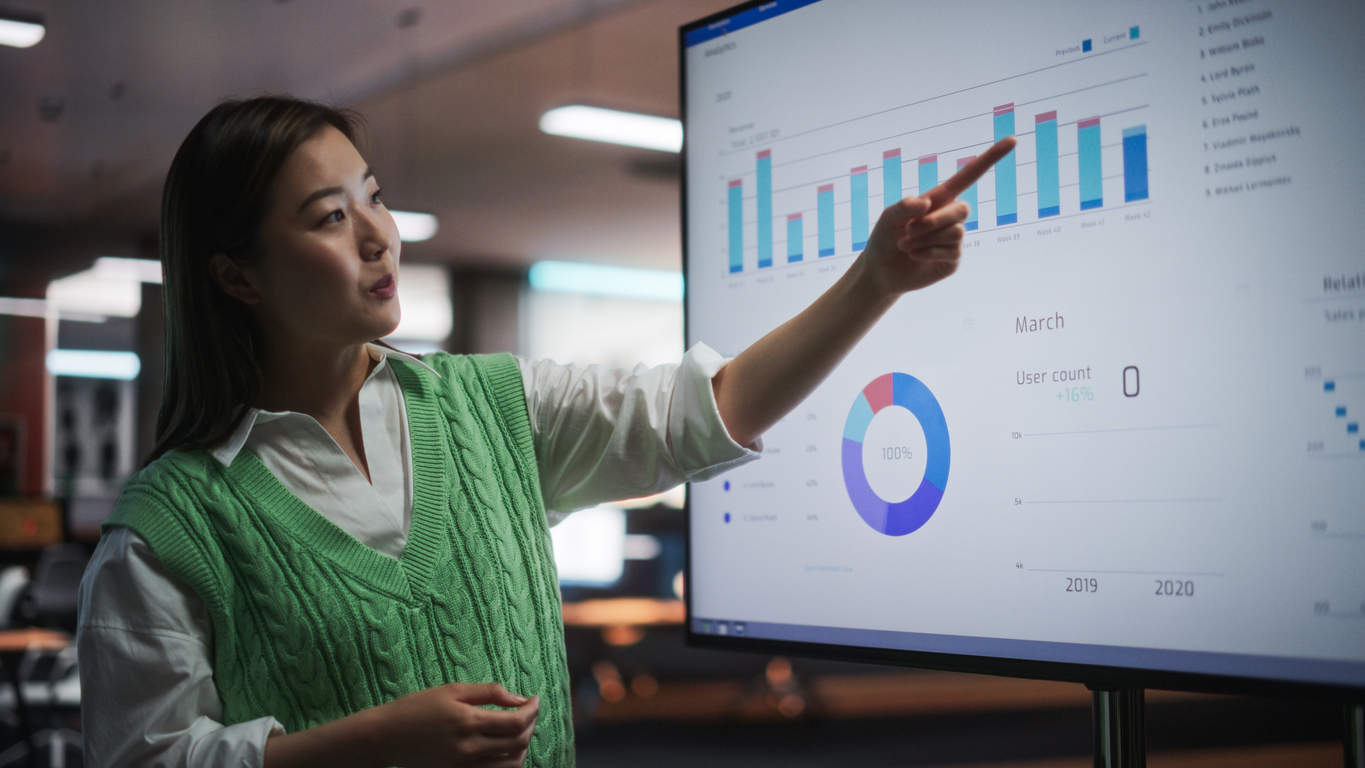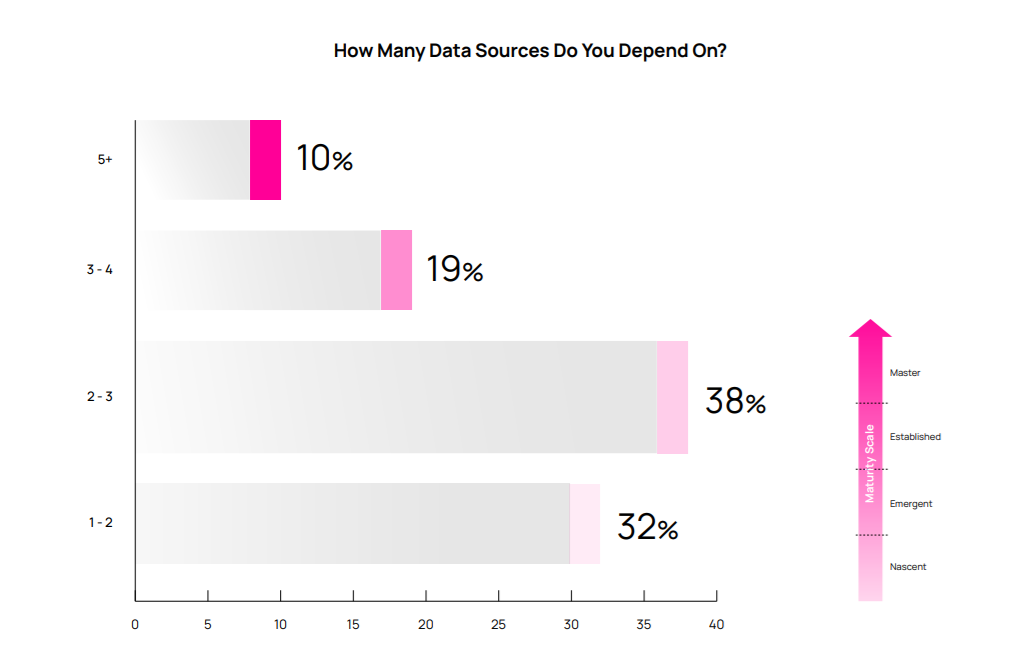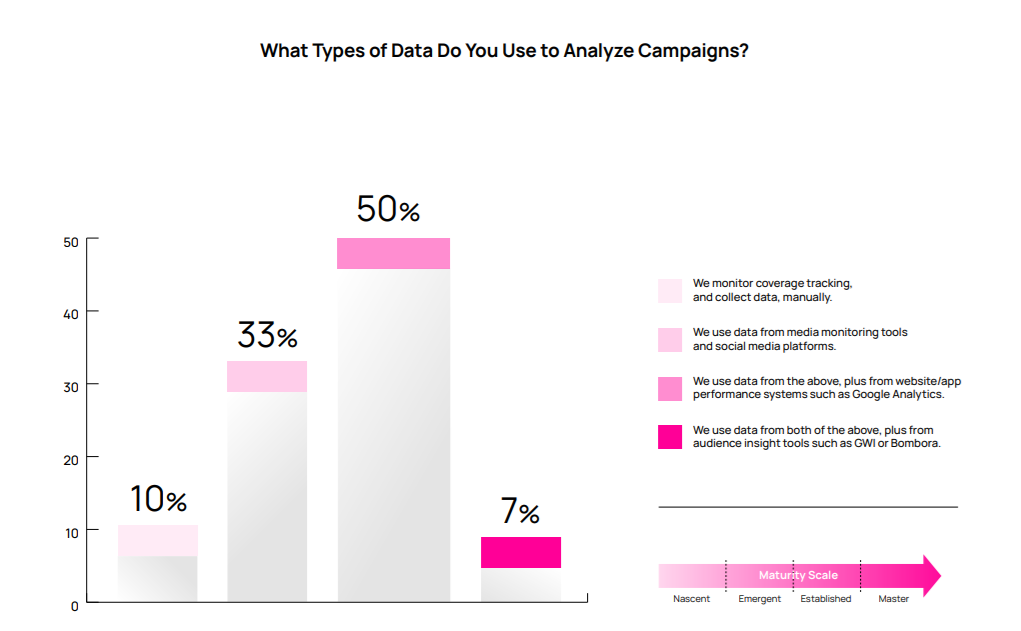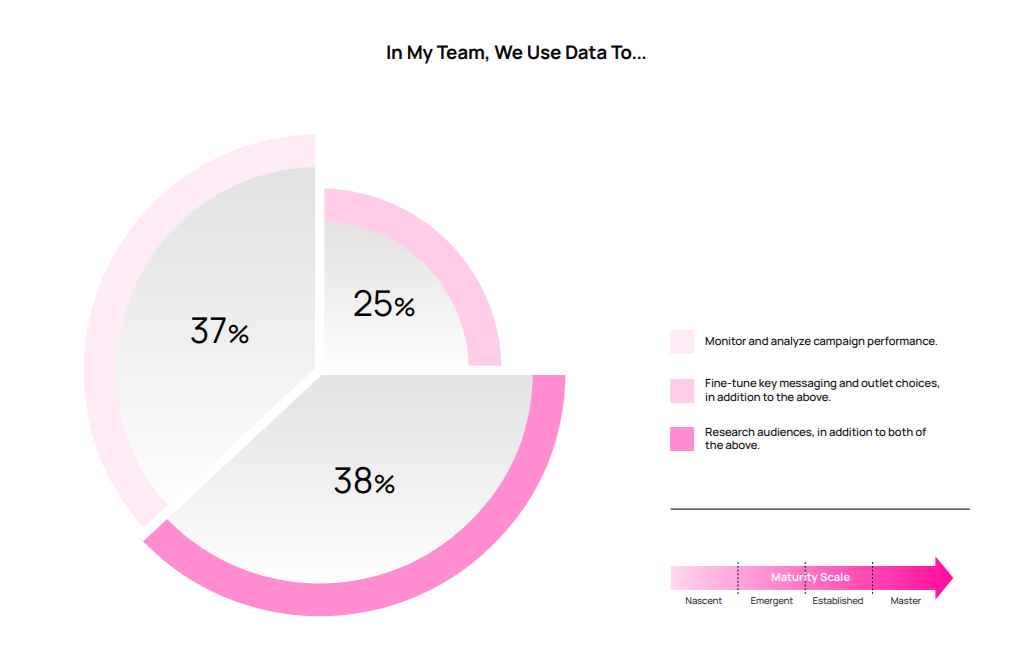By the Numbers: How PR pros are using data today
Measurement is one of the trickiest, yet most important, aspects of PR.

Gathering, interpreting and storytelling around data leads to better campaigns and better buy-in from executives or clients. But how many in the profession are truly capitalizing on the insights data can provide?
Hotwire Global’s new “The State of Data & Analytics Maturity in PR & Communications 2024” examines how deeply various PR professionals integrate data into their practice by sorting survey respondents into one of four categories based on their answers: Nascent, Emergent, Established and Master.
Overall, the news is good for PR practitioners. Only 2% were placed in the nascent category, while a huge 73% were ranked as Established, defined as teams that “collect data from many sources and automate most data processing tasks. They employ advanced analytical techniques. Reporting and visualization capabilities are well-developed, enabling better stakeholder engagement.” Eighteen percent fell into Emergent and 7% into Master.
This is great news for the industry, indicating that the majority of practitioners have moved deep into the collection and analysis of data to overall buoy and improve their strategies, campaigns and reporting.
But there is still room for improvement. Data from the survey found that nearly a third of respondents (32%) use only 1-2 data sources, with another 38% using only 2-3 sources. This indicates that while there’s an increasing integration of data into PR, many are still relying on only a handful of sources with which to make important decisions, which could limit the scope and effectiveness of strategy and back-end reporting.

But what are those sources PR professionals are pulling from? There’s still the old standby of coverage tracking. This number, while a blunt instrument, will never go away. There will always be utility in being able to say how many times you appeared in the press (for good or for ill) and what the sentiment around those appearances was. Most pros today are, thankfully, moving beyond that simple metric to dive deeper, using social media monitoring, media monitoring tools and website performance data to deepen their understanding.
Demonstrating the value of the PR function is an ongoing battle. But practitioners are getting more tools to do so. Only 13% now say they use only quantity of coverage — a signal that strategy is advancing beyond just raw numbers. Another 29% of pros say they layer on top of that data information about the types of media they reached and their audience. An additional 23% also add share of voice and key messaging pull-through. And an encouraging 35% do all of the above plus audience engagement or attribution numbers, such as Google Analytics.

This is encouraging news. PR pros are continuing to up their game and dive deeper into data rather than relying on the easiest to obtain. This shift toward deeper engagement with data is a positive trend that will serve PR well in an era of tightening budgets.
When it comes to parsing this data, most pros are still turning to good old-fashioned Excel, with just under 50% using a spreadsheet to analyze data. This is a cost-effective solution, but can also be clunky and introduce the possibility of human error. Another 34% of professionals use the analytics built into tools like Cision or Meltwater, which are often slick and easy-to-use, but give insight into only a limited window of data. Just 18% use standalone platforms like Tableau or Power BI.
But what do they do with all this data?
PR pros are rapidly improving their data collection and integration. But what do they do with it all?

That information, too, is encouraging, indicating that a slight plurality of professionals are using data at every phase of the campaign life cycle, from research on the front end to fine-tuning during the campaign to analysis on the back end. Still, that means 37% of professionals are only using data to gauge performance rather than in the planning and implementation phases — a missed opportunity to be sure.
Fifty-eight percent of practitioners say their approach to data integration is a blend of best practices and data-led decision-making. Thirty-one percent said they rely more on best practices than data, while just 11% said they were wholly data-driven. In this case, the middle path may be the best. Data can tell us a great deal, but human intuition and creativity must still have some role in campaigns yet.
How is your organization integrating data?
Allison Carter is editor-in-chief of PR Daily. Follow her on Twitter or LinkedIn.







